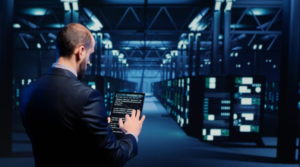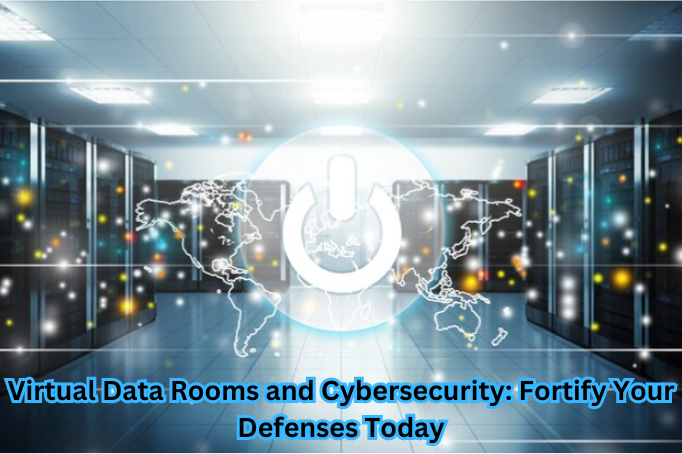Virtual data rooms cybersecurity: Strong cybersecurity measures are necessary in today’s lightning-fast digital world, where private data is the nation’s money. Secure data storage and sharing solutions, such as virtual data rooms (VDRs), have become essential in many businesses. In this post, we’ll look at virtual data room cybersecurity, discuss its importance, and offer advice on strengthening your defenses to keep your sensitive data secure.
Understanding Virtual Data Rooms
When it comes to storing and exchanging sensitive information, virtual data rooms (VDRs) are the way to go. Industries such as healthcare, law, and finance, where the security of personal information is of the utmost importance, have embraced these digital platforms. Incorporating strong cybersecurity safeguards into VDRs is becoming more important as organizations depend on them more and more to improve cooperation and due diligence procedures.
The Pervasiveness of Cyber Threats
Businesses encounter a constantly changing environment of complex cyberattacks in this age of cybercrime. Cybercriminals use various strategies, such as phishing and ransomware, to exploit weaknesses and get personal data without authorization. Cybercriminals have set their sights on virtual data rooms because of the wealth of sensitive information they contain. Companies must take precautions to strengthen their virtual data room security after realizing cyber dangers are ever-present.

Critical Points on Virtual Data Room Security
Data Encryption: Preserving Information While It Is In Motion and Stored
A virtual data room’s encryption is a cornerstone of its cybersecurity. Encrypting data while it is in motion and when it is stored can prevent unauthorized individuals from accessing it. Even if data is intercepted, it will remain indecipherable without the correct cryptographic keys, thanks to robust encryption techniques.
Enhanced Security with Multi-Factor Authentication
Multi-factor authentication (MFA) is critical in protecting virtual data rooms from illegal access. Beyond the standard login/password combination, this offers additional protection. Two-factor authentication (MFA) greatly reduces the likelihood of illicit access by requiring the user to provide both knowledge (password) and possession (mobile device for verification codes, for example).
Auditing and Monitoring regularly
An effective cybersecurity plan must include continuous Monitoring and frequent security audits. Organizations may quickly identify suspicious activity and take preventative actions to lessen risks by watching user behaviors within the virtual data room. Maintaining effective and up-to-date security processes and finding vulnerabilities may be achieved through regular audits.
Collaborating on Cybersecurity
It is just as critical to cultivate a cybersecurity-conscious culture among staff as it is to deploy cutting-edge cybersecurity technology. Human mistakes still cause the majority of data breaches. Cybersecurity resilience is greatly improved by holding frequent training sessions, increasing knowledge about possible dangers, and establishing accountability among staff members.
How to Pick the Best VDR Service
Choosing a trustworthy and safe virtual data room supplier is important in improving your cybersecurity. Verify that any prospective service providers you work with follow all applicable regulations and standard practices for data security. Features like data encryption and safe user authentication should be high priorities when searching for a solution to secure sensitive information.

The Cybersecurity of Virtual Data Rooms in the Future
The sophistication of cyber attacks is expected to rise with the continuous advancement of technology. Cybersecurity for virtual data rooms will continue to evolve in response to new threats. AI and machine learning algorithms greatly assist in cyber attack prediction and prevention, which can provide automatic reactions to new threats and threat intelligence in real-time.
Boosting Your Cyber Defenses: A Final Thought
Increasing the security of your virtual data room is crucial in today’s world of ever-changing cyber threats. Organizations may securely navigate the digital arena while protecting their most precious asset – sensitive information – by being aware of the dangers, adopting strong cybersecurity measures, and encouraging a vigilant culture.
To sum up, successful companies in the modern digital era understand the critical importance of cybersecurity and virtual data rooms working together. If you want to be sure that cybercriminals can’t hack your virtual data, you should follow these procedures, update yourself on new threats, and strengthen your cybersecurity defenses.
FAQ: Virtual data rooms cybersecurity
We are in the information era now, when data is more than a commodity; it is the essence of contemporary companies. There is an ever-increasing need to ensure the safety of sensitive information in today’s digital world. Virtual data rooms (VDRs) are becoming more important for safe information exchange; yet, as keepers of sensitive information, they must withstand the always-changing cyber threats.
What is a VDR in business?
Business operations, including mergers and acquisitions, due diligence, fundraising, and legal processes, frequently use virtual data rooms (VDRs) and secure online repositories for storing and exchanging sensitive information. Without sacrificing security, it offers a restricted environment where authorized individuals may access, examine, and collaborate on private material.
How secure are virtual data rooms?
The rigorous security mechanisms built into virtual data rooms guarantee the utmost data safety. Standard security measures often include audits to track user actions, multi-factor authentication to restrict access and robust encryption mechanisms for data stored in motion. Since different providers may offer varying degrees of protection, selecting a trustworthy VDR provider with a history of upholding rigorous security measures is essential.
What is VDR security?
Data in a virtual data room must be protected in three ways: confidentiality, integrity, and availability. These three aspects are together known as VDR security. The most important security features are encryption, audit trails, access controls, and multi-factor authentication. These features cooperate to keep sensitive information safe in the virtual data room by limiting access to authorized personnel only.
What are VDRs used for?
Many different types of businesses use virtual data rooms. Financial transactions, due diligence, legal proceedings, and secure document exchange are some of the most typical uses for them in M&A. Businesses that deal with sensitive information or conduct complicated transactions cannot function without virtual document repositories (VDRs) because they improve document organization, expedite cooperation among stakeholders, and enable secure communication.
Where is VDR used?
Virtual data rooms are useful in fields where the safe transfer of confidential information is paramount. Financial services, law, healthcare, property, and corporate governance are common practice areas. For example, virtual data rooms (VDRs) offer a safe space for advisers, buyers, and sellers to review and discuss sensitive information during mergers and acquisitions. Due to their adaptability, virtual data records (VDRs) are easy to use in any setting that prioritizes data protection and limited access.
How do you use a virtual data room?
There are a few essential measures to follow while using a virtual data room:
- Pick: Consider your unique safety and reliability requirements when choosing a VDR service.
- Creating user accounts, establishing access rights, and organizing folders and documents are all part of setting up the virtual data room.
- Document Upload: Safely upload the necessary documents, ensuring they are well-organized for simple navigation.
- Send Invitations: Authorized users can be granted access to the virtual data room by sending out invitations. For extra protection, make use of technologies like multi-factor authentication.
- Work Together: The virtual data room lets users see, download, and discuss documents in real time. For reasons of both security and compliance, audit trails are frequently used to trace activities.
Companies following these procedures may use virtual data rooms to collaborate and manage documents safely.

